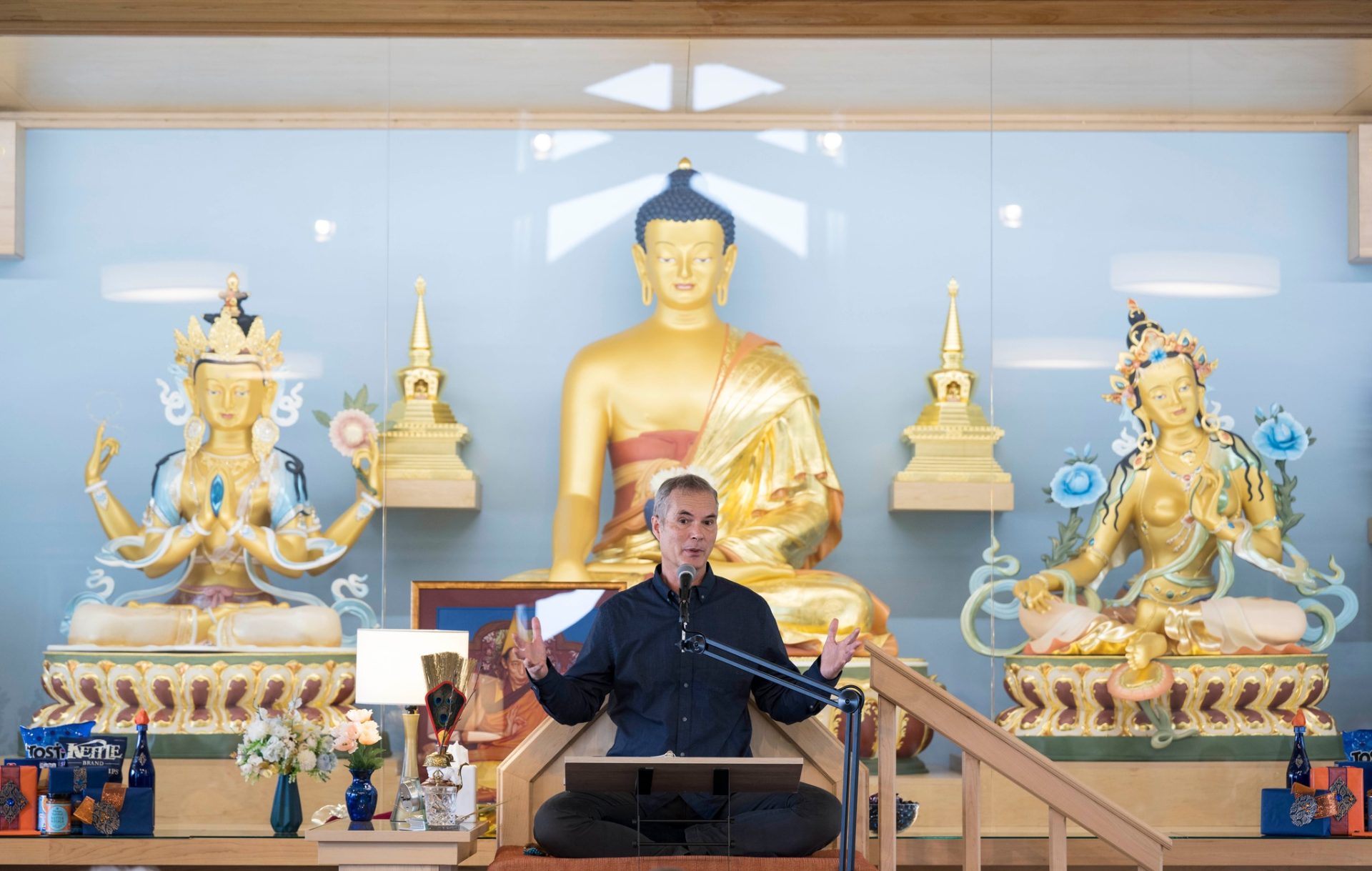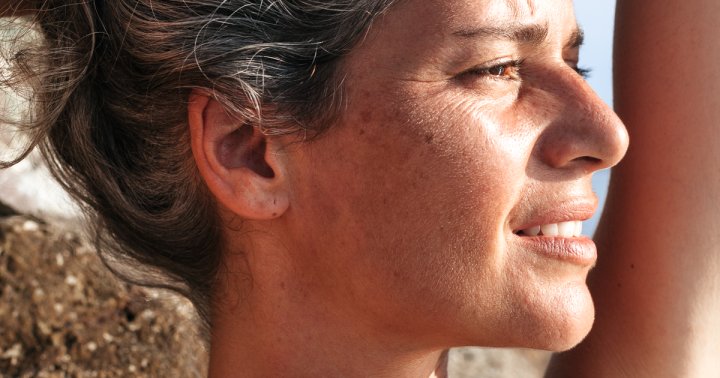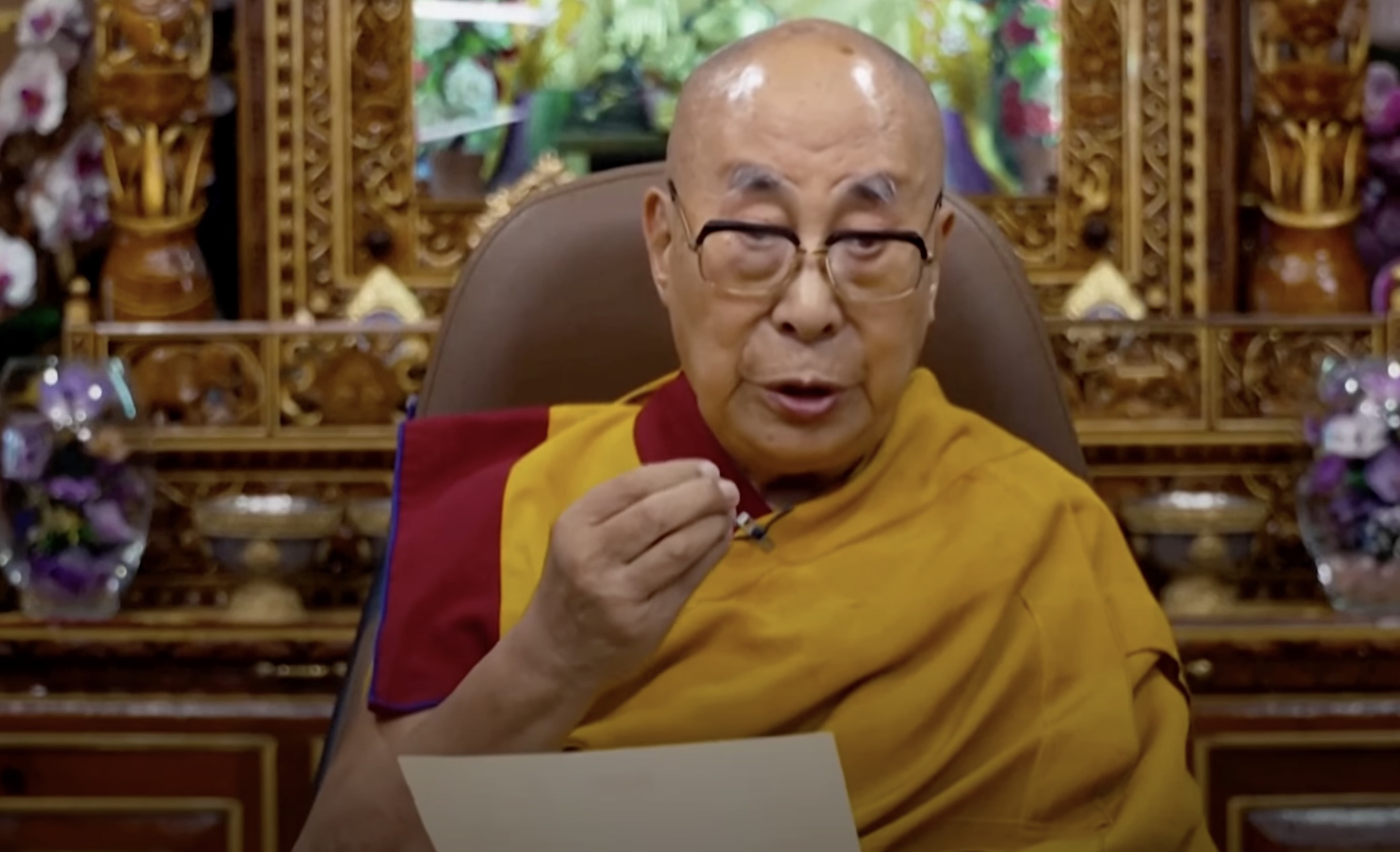Dive right into Water Yoga with these 5 Aqua yoga poses
The post Dive right into Water Yoga with these 5 Aqua yoga poses appeared first on The Yoga Nomads.
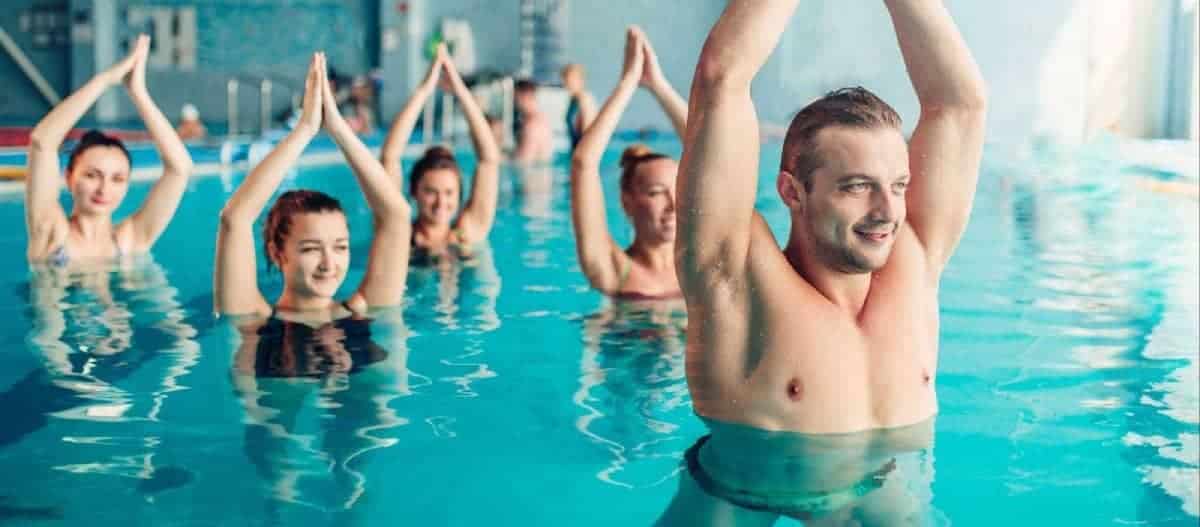
How can yoga and water go together? Well, you could be in for a pleasant surprise. Water Yoga, which is also called Aqua Yoga, is a little-known style of yoga that has its roots in aqua aerobics. It is different from its more modern cousin, SUP (Stand-up-paddleboard) yoga, as rather than being on top of the water, you will be right in the water!
Aqua yoga can be offered as an alternative to yoga on a mat as the element of water supports gentle movement and will reduce the chance of injury as it takes the pressure off bone stress. With reduced effects of gravity, you will feel like you are floating as you flow through a water yoga class!
What is Aqua Yoga?
Aqua yoga is yoga poses done in the pool. It involves aqua yoga props such as the pool noodle, to help support the body stay afloat in the poses.
Aqua yoga has many health benefits including:
Less pressure on the knee and ankle joints Easier to build balance and stability Can be a cardio fitness workout with added cardio exercises Good for injury rehabilitation Is a form of resistance training, good for overall health Suits beginners and advanced yogis too!What do you need for a water yoga session?
For water yoga, you need water, a pool noodle and preferably a certified personal trainer or qualified yoga teacher who can assist you through the poses.
You will want to practice in a pool with water that is around chest depth. This gives you a good balance between standing poses and floating, without having to tread water.
In the pool, warmer water is better, you want to find a pool that is preferably above 86 degrees Fahrenheit. Warm water helps to keep your body warm during practice, allowing you extra flexibility in the muscles and a good range of motion in the joints.
You can also use pool noodles or other floatation devices to support your body during the water yoga poses.
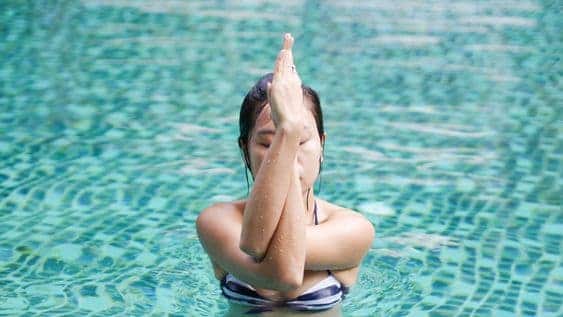
Five Aqua Yoga Poses
If you are ready to learn about some water yoga poses, here are 5 of the most common that you should know about!
1. Padangusthasana (Big Toe Pose)
Big toe pose involves standing on one leg, with the other leg extended out to the side, and depending on your flexibility, holding onto the outstretched big toe with your fingers.
You may want to try this in the shallow end of the pool, so that you can stand with ease. Start standing on your left leg, and you can either extend your right leg out and catch the toes in your hand, or rest the right leg on the side of pool and outstretch your arms in opposite directions.
This pose does not require a pool noodle, but it is one of the more advanced poses because it involves balancing on the legs and a certain amount of flexibility. You can also begin with tree pose, a more gentle variation, and work up to big toe pose in the long run.
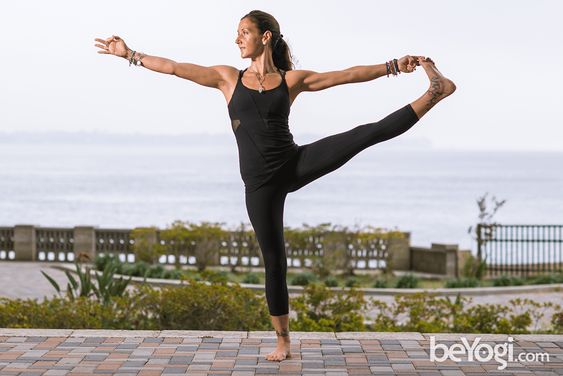
2. Urdhva Mukha Svanasana (Upward Facing Dog)
For your aqua upward-facing dog, you will need a pool noodle. Take hold of your noodle in both hands and stretch your arms out in front of you. Roll over onto the tops of your feet and lean the body forward in a plank position. Press the pool noodle down into water beneath you, and keep your head up high. Squeeze your shoulder blades together as you drop your hips, creating a gentle arch in the spine.
This pose is great for stretching the entire spine, and opening up the chest. Perfect after a day at the work desk!
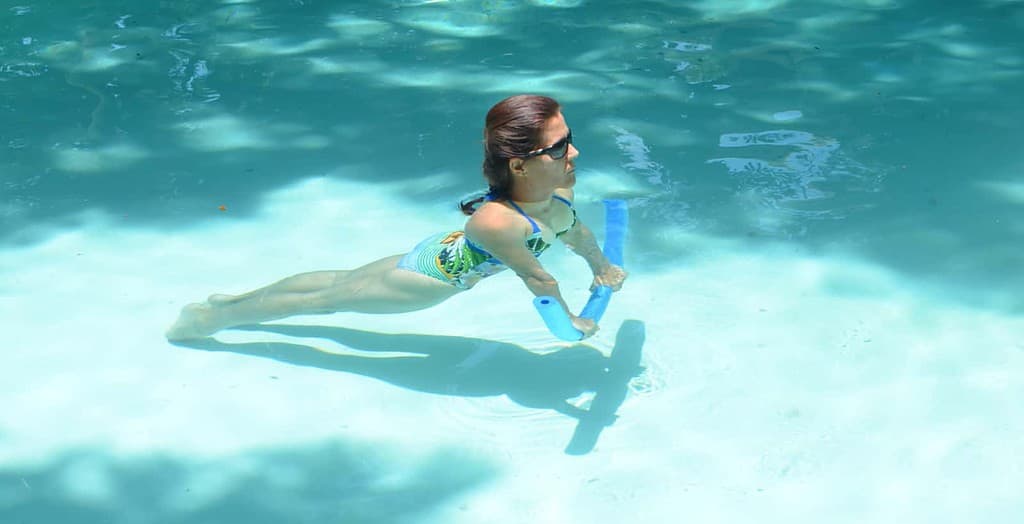
Boat pose sounds like it was made for water yoga! This pose is great for the whole body, but particularly for building up the strength of the core muscles.
To do this, you will need at least one or two noodles. Place the first noodle under your hips, and find a good balance point in the middle. Then, place the second noodle under your knees. You will need to activate your core here to keep holding the boat position. If you need extra support here, you can also place one more noodle behind your back to keep your chest lifted.
Obviously, the less noodles you use, the stronger the pose will be. So allow yourself to slowly build up to the one noodle variation.
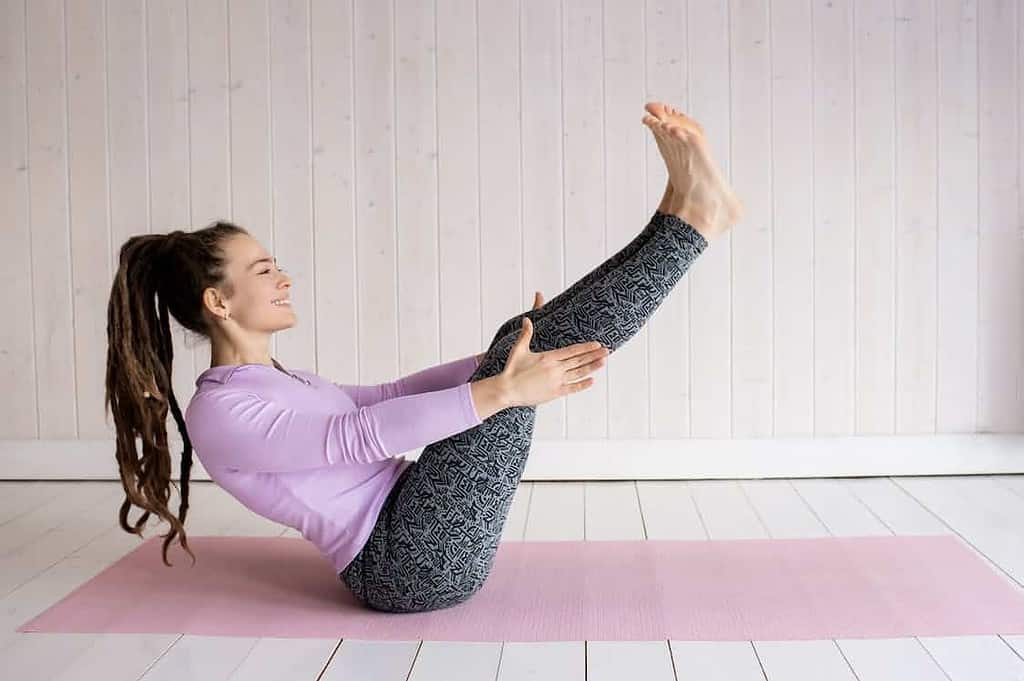
4. Ardha Chandrasana (Half Moon Pose)
For Half moon pose, you want to stand on one leg, open your body to the side and extend your top arm up to the sky and the other hand will extend long to grab the wall.
For example, if your right foot is your standing front foot, then place it firmly on the pool floor and extend your left foot behind you. Hold onto the pool wall with your right hand, and extend your left arm up to the sky. Use your standing foot and the pool wall to stabilize your body.
One of the benefits of the water here, is that it helps you to balance more easily than doing this pose free-standing.
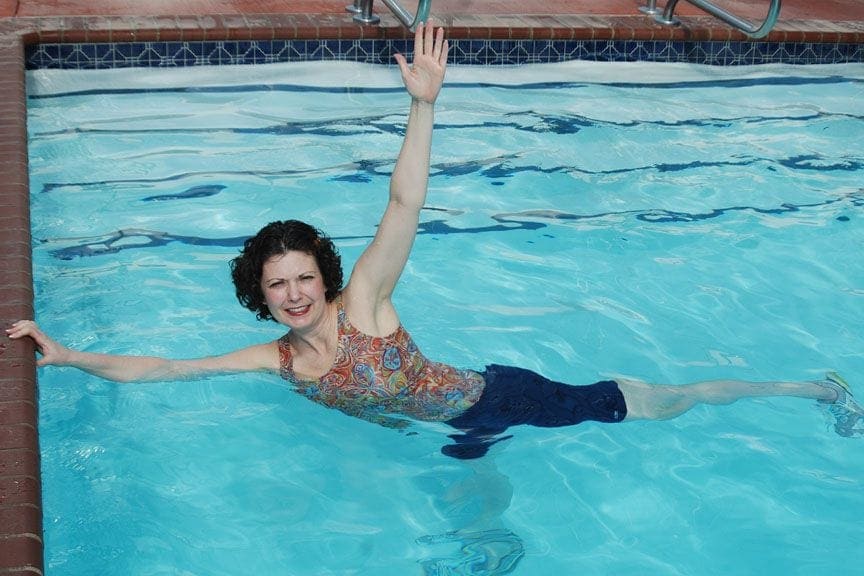
5. Adho Mukha Vrksasana (Handstand)
For a handstand, we do only recommend this in a large pool with a big floor space. It is another advanced yoga pose, so do take care and make sure there are other people around if you are attempting this for the very first time.
If you are doing your yoga session in a spa, we don’t recommend that you add a handstand, as a spa often has small and uneven ground floor to stand upon, and the risk of getting clothing or hair caught in the spa jet.
When you are ready, dive your head underwater, land your hands flat on the floor and extend both of your feet up toward the sky. Try to straighten your body and hold this pose for a few seconds. The water will help to stabilize your body and keep you in balance. Try to keep both your left arm and your right arm straight as you balance.
Before you know it, you will be practicing many types of yoga inversions in the pool, and soaking up all the benefits of being upside down.
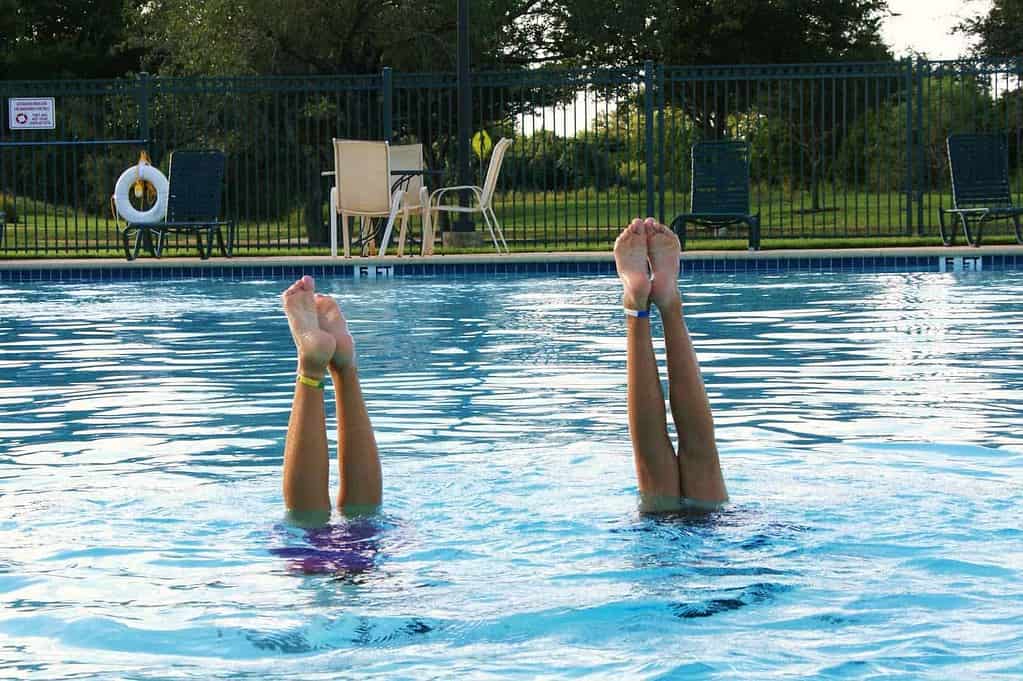
Bonus Pose – Finish with Savasana
No yoga class is complete without a savasana at the end. To do this final resting pose, take one noodle behind your shoulders and neck, stretching the arms out long. Take the other noodle down the length of your spine, or behind the knees to keep your legs afloat. As always, make it as comfortable as possible.
Close your eyes for a few minutes and focus on your breath moving in and out of your body. Let all of your muscles relax after a challenging class, and allow yourself to simply float.
Sometimes, in a group aqua yoga studio class, the teacher may guide a gentle meditation here to help you follow your breath and melt into bliss.
As the class comes to an end, slowly push the pool noodles away and slowly return to the present moment. Land your feet back on the ground, and congratulate yourself for completing another water yoga session!
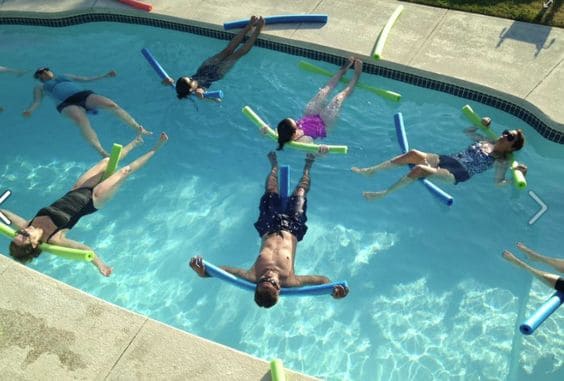
Putting it all together – An Aqua Yoga Practice for you to try
Yoga in the pool is meant to be fun! Joining a group yoga class can be a great thing to do with friends, and you can soak up the benefits together.
If you are ready to begin, try one of these practices for a great aqua yoga class for beginners:
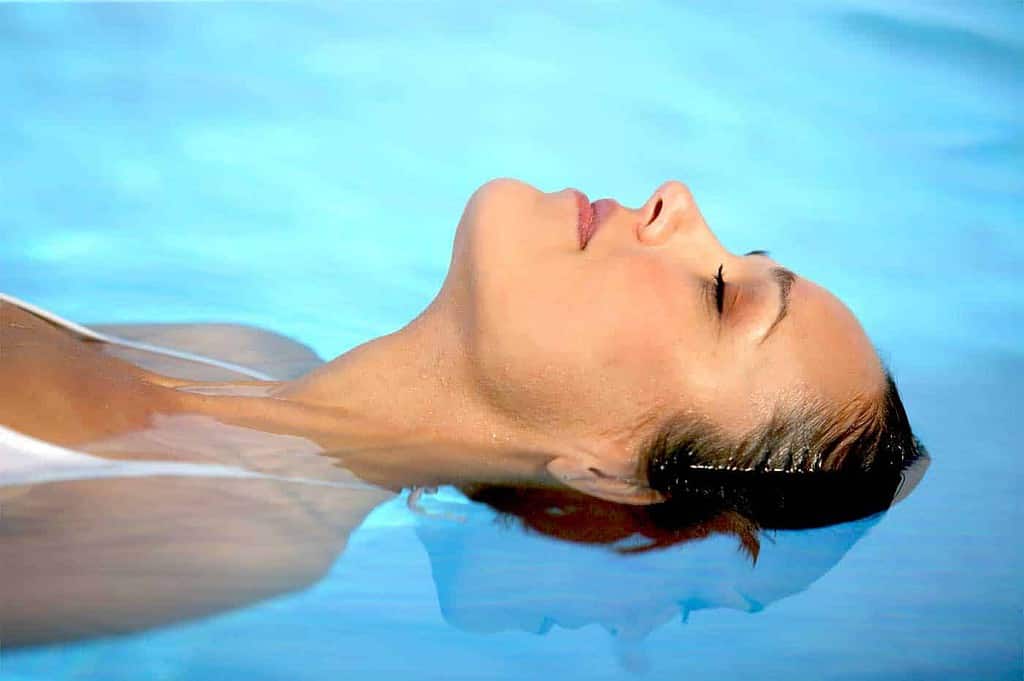
Frequently Asked Questions:
Can yoga be done in water?
Yes, aqua yoga is yoga poses that are done in water. You will need a body of water, such as a pool, with water that comes up to your chest, a pool noodle or two, and a knowledge of some aqua yoga poses.
What are the best water yoga poses?
The five poses listed in this article are great for water yoga! They are: big toe pose, half moon, upward facing dog, boat pose, and handstand! You can also enjoy a water yoga savasana at the end of your session.
What are the main benefits of aqua yoga?
The main benefits of doing yoga in water include the reduced pressure of gravity on the joints. Being in water is like a gentle resistance training, great for building muscle strength without injuring any of the joints. Being in warm water can also help to improve flexibility and range of motion.

 FrankLin
FrankLin 







